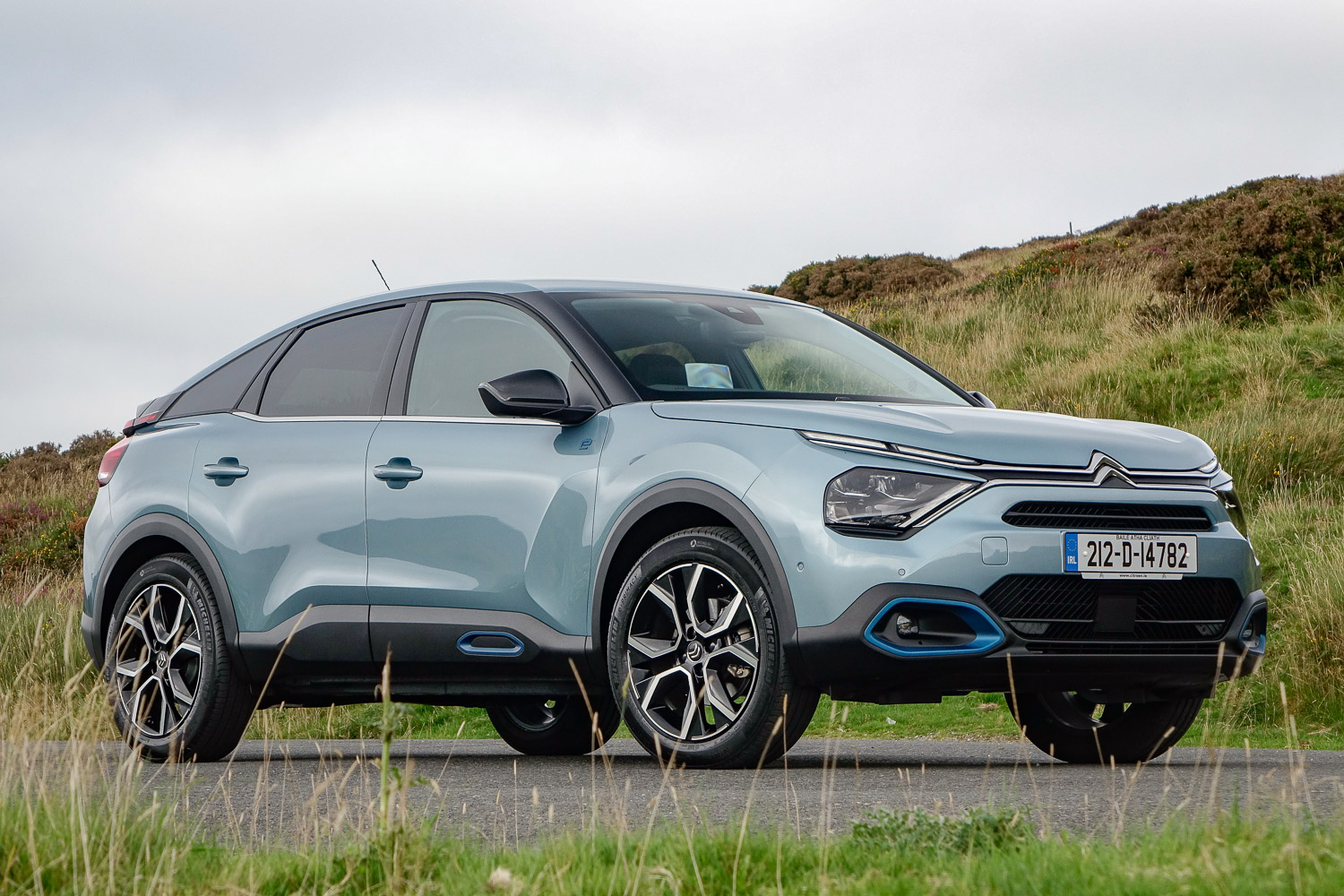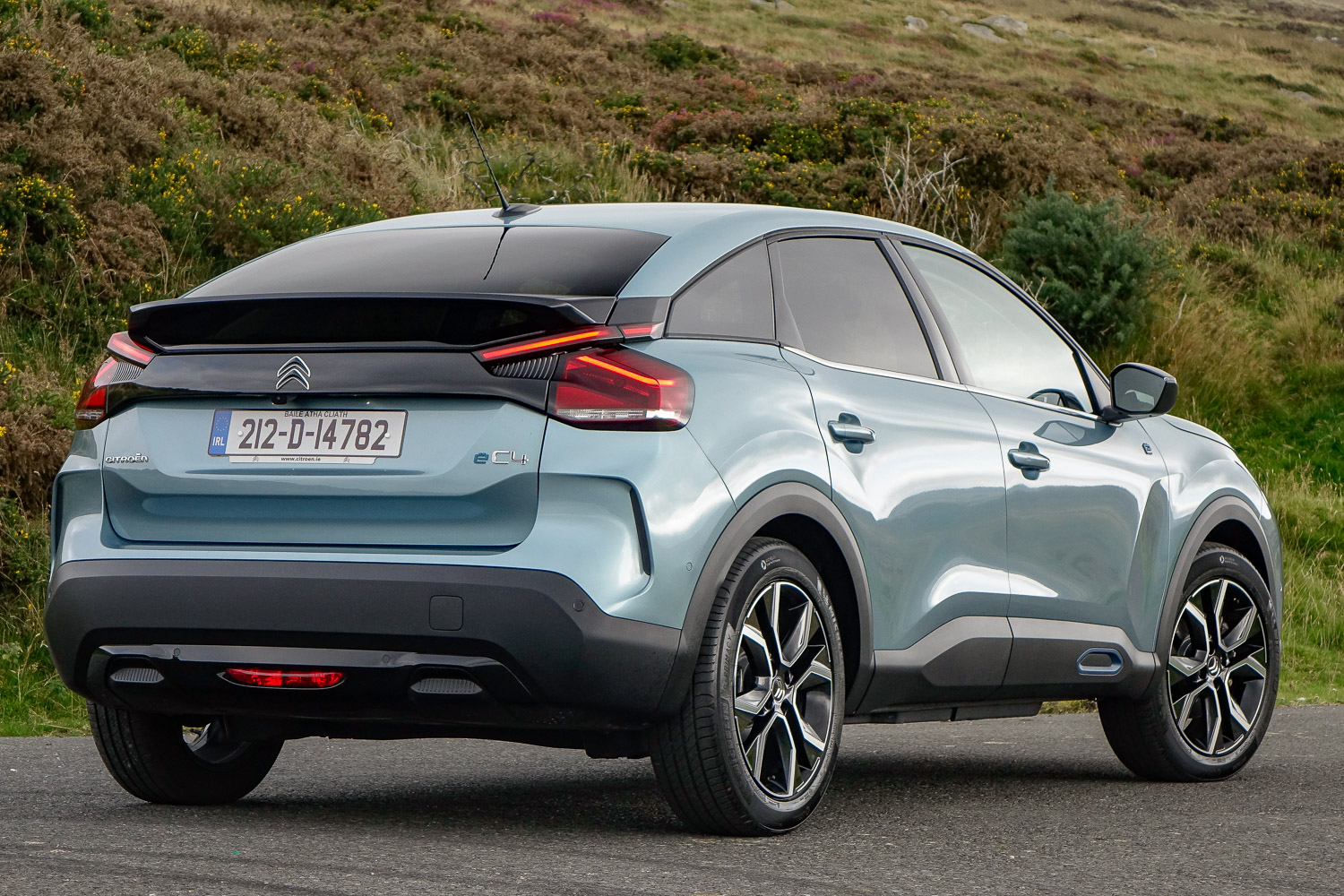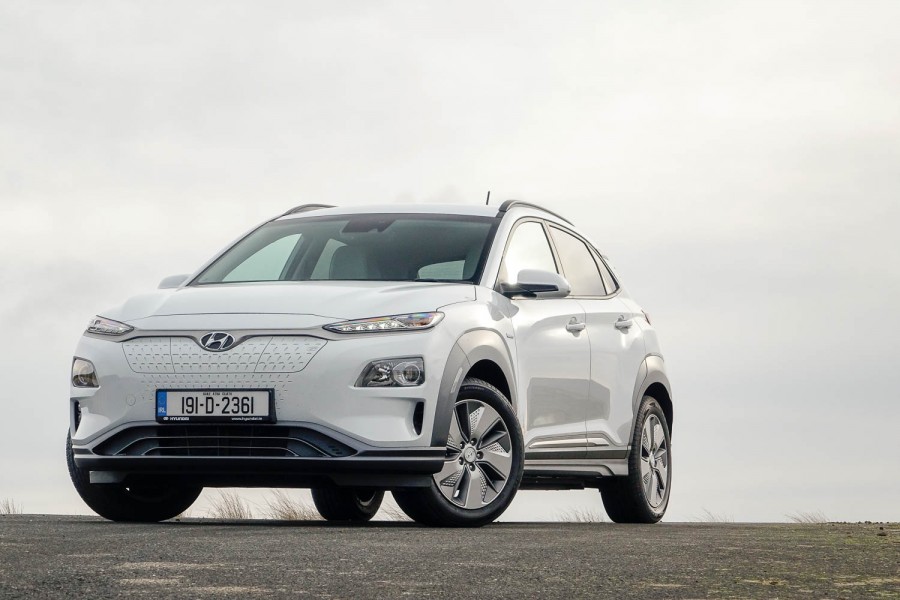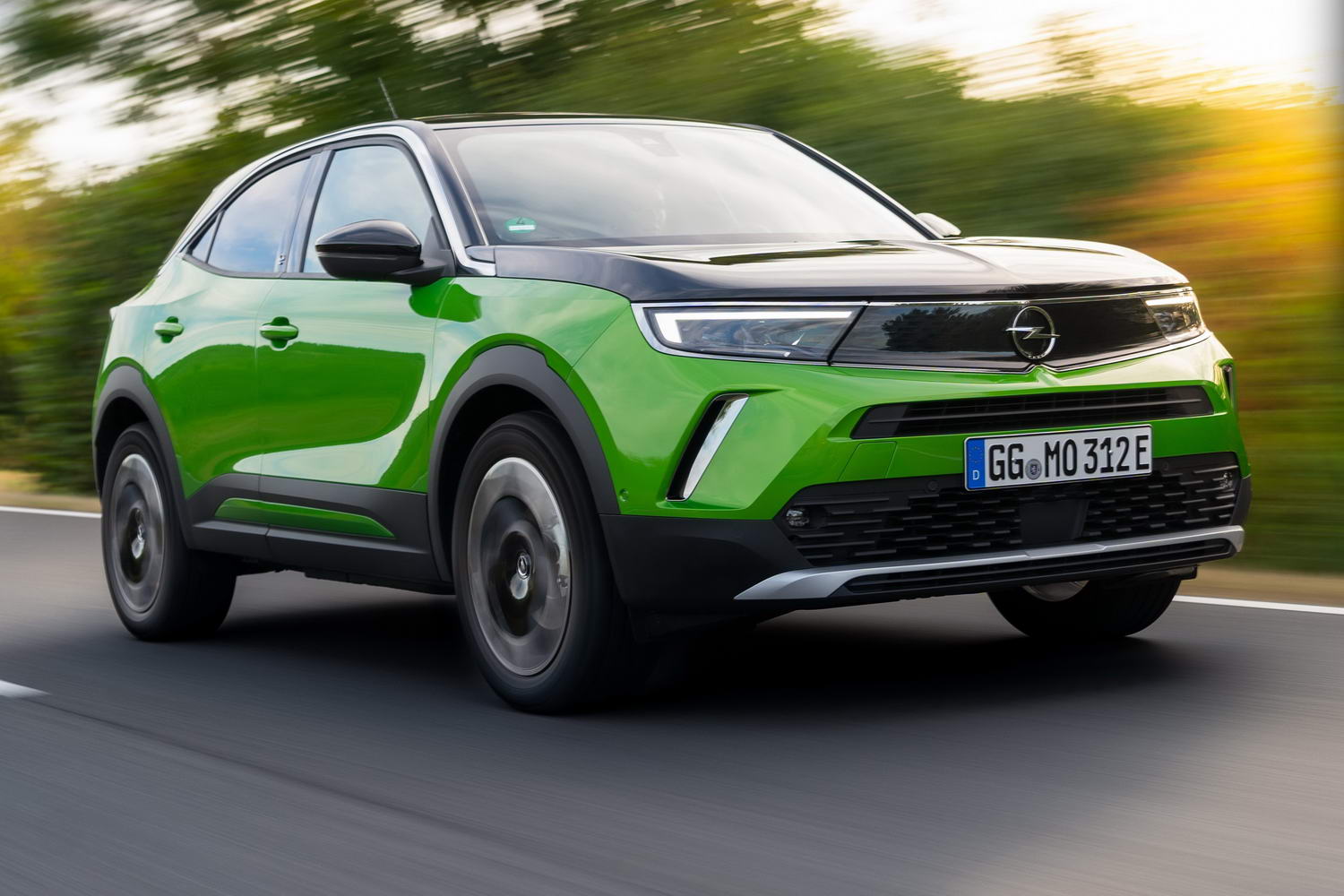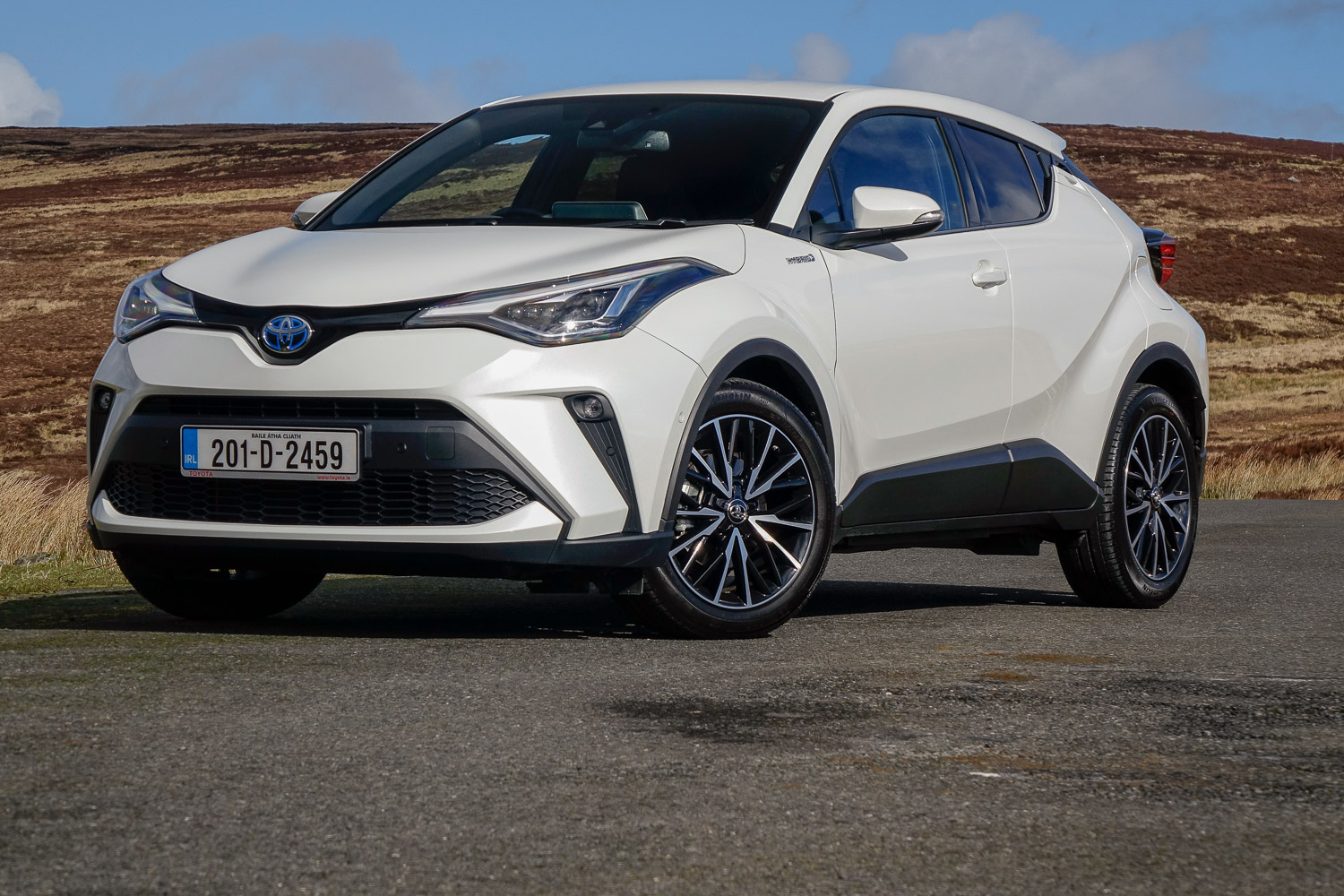Citroën C4 overview
Bravo, Citroën. While everyone else seems to be fast abandoning the family hatchback segment in favour of producing yet another SUV, Citroën has - by and large - decided to stick with a proper, five-door family car. Well, sort of. The new C4 is very definitely a family hatch (the proof of which we'll offer in a moment), but it does at least tip its hat in the general direction of crossover-ness, with a slightly elevated ride height and some chunky rear styling that's vaguely reminiscent of the Toyota C-HR's. Coincidentally or otherwise, the C-HR is possibly the C4's closest rival, in genre terms.
Underneath, the Citroën C4 - and the all-electric ë-C4 we're testing here - rides on the same chassis and platform as a whole bevvy of other Stellantis Group products. Cars as varied as the Peugeot 208 and 2008, the Opel Corsa and Mokka, and the DS 3 all share the same basic 'EMP1' underpinnings.
While that might trigger concerns of samey-sameness, actually the commonality allows us to offer proof that the ë-C4 is more hatch than crossover. Because it uses the same battery and electric motor as the electric versions of the Mokka-e and e-2008, the ë-C4 should therefore have the same useable range as those two cars, which are very definitely crossovers. However, the Citroën has an extra 30km of range, thanks to its more slippery, aerodynamic shape, so to us that puts it closer to hatch-dom. You may feel differently.
The Citroën C4 model range
The C4 range is split three ways, following in the footsteps of its Peugeot, DS and Opel cousins. You can still buy a diesel version, if you really want one, equipped with the 110hp 1.5-litre BlueHDi engine. More likely, you'll want to go for a petrol model, which uses the familiar 1.2-litre, three-cylinder PureTech engine, in 100hp, 130hp and 155hp forms. Or, as a third way, you can go for this ë-C4 electric version.
Prices start from €26,080 for the 100hp 1.2-litre engine in Feel trim. Feel comes as standard with 18-inch alloys, tinted side windows, 5.5-inch digital instrument screen, 10-inch central touchscreen (with Apple CarPlay and Android Auto), leather-wrapped steering wheel, a mounting point to fit a tablet to the front passenger dashboard and LED 'Vision' headlights, along with a safety pack that includes autonomous emergency braking, speed limit recognition, lane-keeping assistance, driver attention alert and front, side and extended curtain airbags. There's also cruise control with a speed limiter, rear parking sensors with a reversing camera, automatic air conditioning, an electric parking brake, automatic windscreen wipers and electric, heated door mirrors. If you want a diesel engine in Feel spec, that'll be €28,130.
You can't have an electric ë-C4 in Feel spec, but you can have one in the next level up, which is called the Feel Pack. Prices for this trim start from €28,980 for the 1.2 petrol (or €32,030 if you want an eight-speed automatic gearbox), or €29,340 for the diesel. The ë-C4 in Feel Pack form costs €34,017. Standard kit includes connected navigation for the central touchscreen, a head-up display, extra USB sockets, part-leather effect seats, exterior courtesy lights, an adjustable boot floor and an overhead-view parking camera system. Electric ë-C4 models come with a few extra toys, including keyless start and entry, blue exterior accent trims and a heat-pump heating system.
Next up is Flair, which starts from €30,430 for a 1.2 petrol (€32,960 if you want an automatic) or €31,150 for a diesel (€33,960 if you want an automatic). An electric ë-C4 in Flair trim costs €35,535. Flair adds diamond-cut alloy wheels, more exterior chrome, 'deluxe' leather steering wheel trim, a built-in dash-cam, the Safety Pack Plus (which includes an augmented automated braking system that has night-time detection for pedestrians and cyclists, extended traffic sign recognition, blind spot monitor, adaptive cruise control for automatic versions and keyless entry and start), high-beam assist for the headlights, self-dimming rear-view mirror and front-and-rear parking sensors with overhead parking camera.
The top spec is Flair Pack, which starts from €35,560 for a 1.2 petrol, which comes in 155hp form (€36,670 for the automatic), €35,900 for the diesel (which only comes with an automatic in this trim) and €37,212 for the ë-C4. Extra equipment includes an upgraded stereo with a centre speaker and a subwoofer, black 'Siena' leather seats, heated front seats, rear folding armrest, door bin lighting and a more advanced active lane-keeping system.
All models come with Citroën's recently-introduced 'Advanced Comfort Hydraulic Cushion Suspension', more on which in a moment.
The C4's CO2 emissions start from 113g/km for the 1.5 BlueHDi in Flair trim, rising to 134g/km for the 155hp 1.2 petrol in Flair Pack trim. Of course, the ë-C4 has zero local emissions when running, so that sits in the lowest tax band.
Citroën currently has a 1.9 per cent APR finance offer in place for the C4, with €245 monthly repayments, or a €320 monthly repayment offer for the ë-C4, which has the same interest rate. Check out the Citroën Ireland website for the most up-to-date rates and offers. Citroën has also teamed up with energy supplier Energia to offer ë-C4 buyers a free home charger and a 20 per cent discount on their electricity bills. If you already have a home charger, then you can avail of a 30 per cent electricity bill discount if you switch to Energia, and a €50 cashback bonus. Ts&Cs apply, of course.
The Citroën ë-C4 interior
The ë-C4's interior sends slightly mixed signals. The seats, using Citroën's 'Advanced Comfort' cushions are outrageously comfy, with very high-quality leather, almost as good as slipping into your favourite armchair at home. In fact, I'll go on record right now and say I don't have anything as comfy as these front seats in my house. Very tall drivers may find that there's not enough adjustment in the steering column and the seat height, but as a six-footer, I had no trouble getting comfortable.
The dashboard itself, though, looks a little cheap in places and that's an effect not helped by the small 5.5-inch instrument panel. We've found this issue in the related DS 3, which uses the same screen, albeit with different graphics, and while logically it's all the screen you actually need, it ends up looking a bit underfed. The good news is that this is augmented by the head-up display that projects onto the windscreen, and it's a good HUD - clear and sharp and easy to understand.
Slightly less easy to understand is the central touchscreen, whose menu layout and functions can be maddeningly unclear at times. Thankfully, that too can be augmented - just plug in your phone and use Apple CarPlay or Android Auto, and optionally there's wireless connections for those functions too. In this Flair Pack model, you get a 12-volt socket, two USB sockets up front (USB-C on the left), plus another two in the rear, and a wireless phone charging pad too.
There's lots of storage space, including two large cupholders on the centre console that have a sliding cover, another lidded cubby underneath the wireless charger and a small glovebox (whose size is hindered by the location of the fuse box). There's another storage area under the front-seat armrest.
Thankfully, Citroën has kept physical switches and buttons to control the heating and air conditioning, which makes the whole system far easier to use than it is in an equivalent Peugeot product (which moves such controls onto the touchscreen). The heat-pump system must come in for some praise here, as it helps to warm up the cabin quickly and efficiently, without putting too much strain on the battery.
Space is excellent, front and rear. In spite of the sloping rear roof, there's adequate headroom in the back, and generous legroom. The centre rear seat is a touch narrow, and there is a transmission hump in the floor, so three-abreast in the back isn't going to be easy, but it's just about doable. You get ISOFIX child seat anchors in the outer two rear seats, too.
The boot, at 380 litres, is bang-on the average for the class, and the rear seats fold down to give you an impressive 1,250 litres maximum volume. If you juggle the adjustable boot floor, then there's a continuous load space from the edge of the tailgate to the backs of the front seats, although the folded rear seats don't quite lie 100 per cent flat - there's a faint slope.
One small thing - the ë-C4 gets some metallic blue trim inserts, such as on the door panels, to remind you that it's an electric version, but it does look at times as if a stick-on plastic protection film has been left on. I found myself accidentally picking at the blue highlights, thinking I could peel them off...
The Citroën ë-C4 driving experience
In a world where car makers continually seem to add bigger wheels and stiffer springs to their cars, comfort suffers. Blame the German premium brands. Ever since BMW, Mercedes and Audi became the brands to have, everyone else has tried to copy their big, arch-filling wheels and their stiff, Autobahn-stable springs.
Everyone except, thankfully, Citroën. As mentioned, the ë-C4 (and, indeed, all C4 models) comes with Citroën's hydraulic cushion suspension. This chucks out the traditional hard rubber 'bump-stop' into which the suspension clatters when you use up all of its available travel, and instead uses a reservoir filled with hydraulic fluid. This helps to smooth out the initial compression of the suspension when it reacts to a bump, as well as the way the suspension springs back after it's been compressed. By gliding into fluid, you get a far smoother reaction than thumping into rubber.
If you're thinking that this gives the ë-C4 a modern-day version of the magic carpet ride of classic 1960s and 1970s Citroëns, with their 'Hydragas' fluid-filled suspension, well you'd be thinking wrong. It doesn't, and really no suspension based on steel springs and gas-filled dampers could possibly achieve a ride quality that wonderful. What the ë-C4 does, though, is a pretty good modern-day impression of those Citroëns of old.
Springs and dampers are much more cost-effective to make than the classic Hydragas system, but the addition of that little hydraulic cushion makes everything so much smoother than it otherwise would be. The contrast is especially sharp if you were to get out of a mechanically-related Peugeot 2008, which has quite a firm ride, and hop straight into an eC4. The ride is soft, loping and languid and so the ë-C4's comfort levels are excellent.
Its handling isn't, but then that's the trade-off. Soft springs mean that the ë-C4 leans noticeably through corners, and the languid, light steering simply isn't interested in providing pin-sharp feedback and guiding you down to an apex. That's OK though, as that's simply not what the ë-C4 is about. The ride comfort sets the tone (in concert with those wonderful seats) and so you relax into driving this car, letting it take the strain, and stop bothering about trying to be sporty. Instead, you find yourself arriving at your destination feeling surprisingly un-tired and quite relaxed. It's a refreshing change, to be honest.
Wind and tyre noise are reasonably well-suppressed too and when you combine that with the silence of the electric powertrain, you really do end up with a very unstressed driving experience.
The ë-C4 has plenty of power, though. Well, actually, it has plenty of torque - 260Nm, all of which kicks in instantly when you touch the accelerator, although the electric motor's tuning makes that quite a smooth, measured kick-in. It's not a performance car, but a sub-10-second 0-100km/h time is respectable, and up to motorway cruising speeds the torque means that there's plenty in reserve for a quick burst of acceleration.
The range of 350km is a good figure, especially, as noted, compared to directly comparable crossover-style models from the same car-making group. That does drop quite a bit if you're running at motorway speeds, though. If you're trying to get from Dublin to Belfast or Cork to Dublin, for example, it's better to assume a roughly 230km range, no matter what the dashboard readout is telling you.
Ideally, we'd like to see an ë-C4 with a slightly larger battery for a 400km+ range. That said, if you're not doing regular long motorway hauls, the ë-C4's range is pretty adequate, and it charges quickly enough (at 100kW) from a rapid DC charging point, where the benefit of the small-ish battery is that it never takes too long to top up. From a home charging point, you can get from empty to 100 per cent in about seven hours, or five hours from a 22kW public AC charger, thanks to the optional 11kW on-board AC charging system. That compact battery also helps to keep the ë-C4's kerb weight down to a relatively trim (by electric car standards) 1,600kg.
Citroën quotes an average of 15.9kWh/100km electrical consumption, and we managed 19kWh/100km on average, which included a lot of motorway driving.
Rivals to the Citroën ë-C4
As we've already mentioned, the most obvious rivals are the ë-C4's electric cousins, the Opel Mokka-e and Peugeot e-2008. Both are very engaging to drive, and both look very smart from the outside, with the Peugeot having a more avant-garde interior, but the Opel having a cabin that's a little easier to find your way around. Neither can quite match the ë-C4's one-charge range, though.
The Volkswagen ID.3 is a close competitor too, especially in basic 58kWh Life form, which matches the ë-C4 for price but comprehensively out-does it for range (425km on the WLTP cycle) and interior space. That said, the ID.3's cabin is less pleasing, overall, than that of the Citroën's. The incoming new Renault Megane E-Tech Electric, which goes one step further than the ë-C4 when it comes to looking like a crossover, will unquestionably be a very serious rival too, with a potential 470km range for the 60kWh battery version (there will be a cheaper 300km 40kWh version as well) and a very appealing cabin.
Our verdict on the Citroën ë-C4
There's a lot to like about the ë-C4. We really like the fastback styling (which has faint visual references to the classic Citroën GS from the 1970s) and the combo of those front seats and the hydraulic cushion suspension means that the ë-C4 displays wonderful levels of comfort when many rivals waste time trying to be sporty with needlessly hard springs. The cabin plastics and instrument display screen could both do with an upgrade, and we'd love to see the option of a larger battery for those doing longer journeys, but the ë-C4 has sufficient range for most, is practical and has mostly good quality, and is refreshingly unlike most other cars in its class in how it drives.
What do the rest of the team think?
I didn't find the suspension quite as magical as Neil describes, spending most of my driving time around the pitted road surfaces of suburban Dublin, but it's quite comfortable by class standards. Regardless, I certainly liked the car, from its quirky styling to its high-quality cabin and the fact that, though it looks like a crossover, it's just as efficient as a hatchback. Shame it's not a little cheaper to buy. Still worth considering, though.
Shane O' Donoghue - Editor

